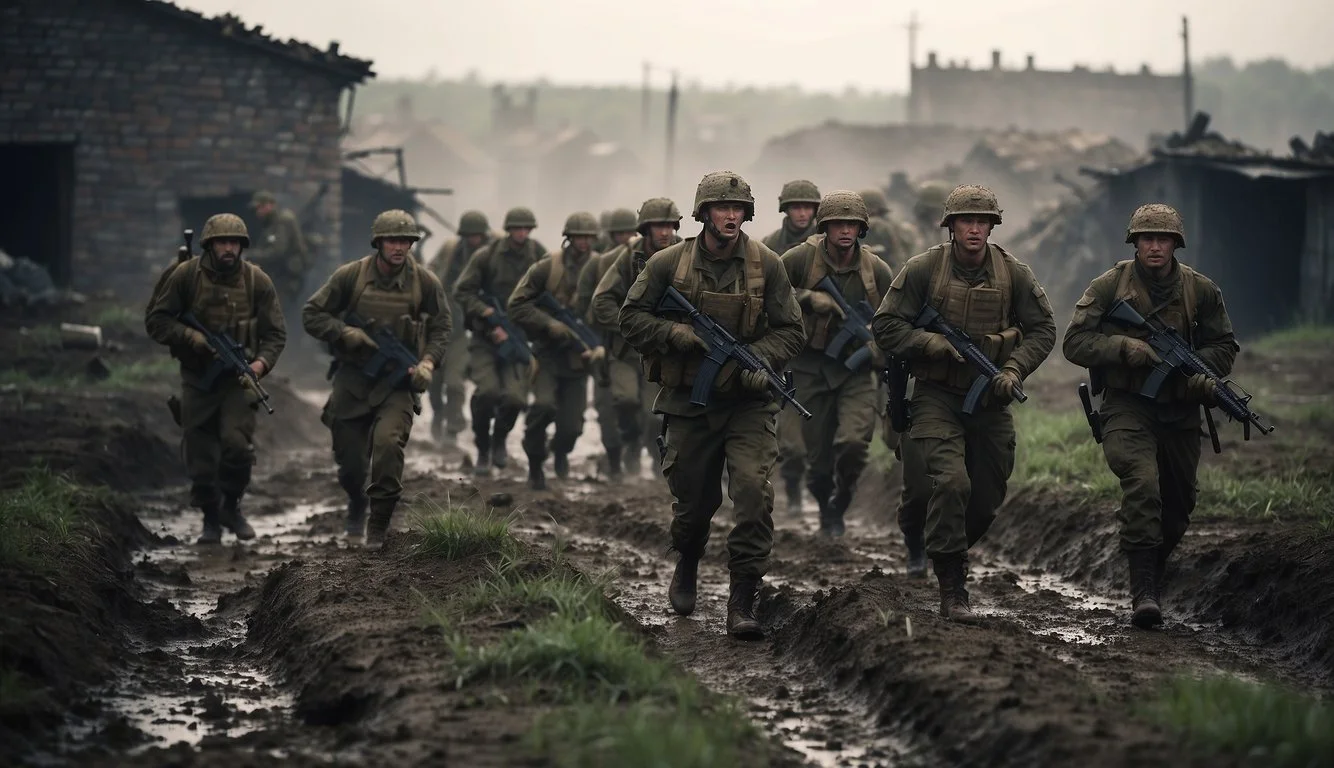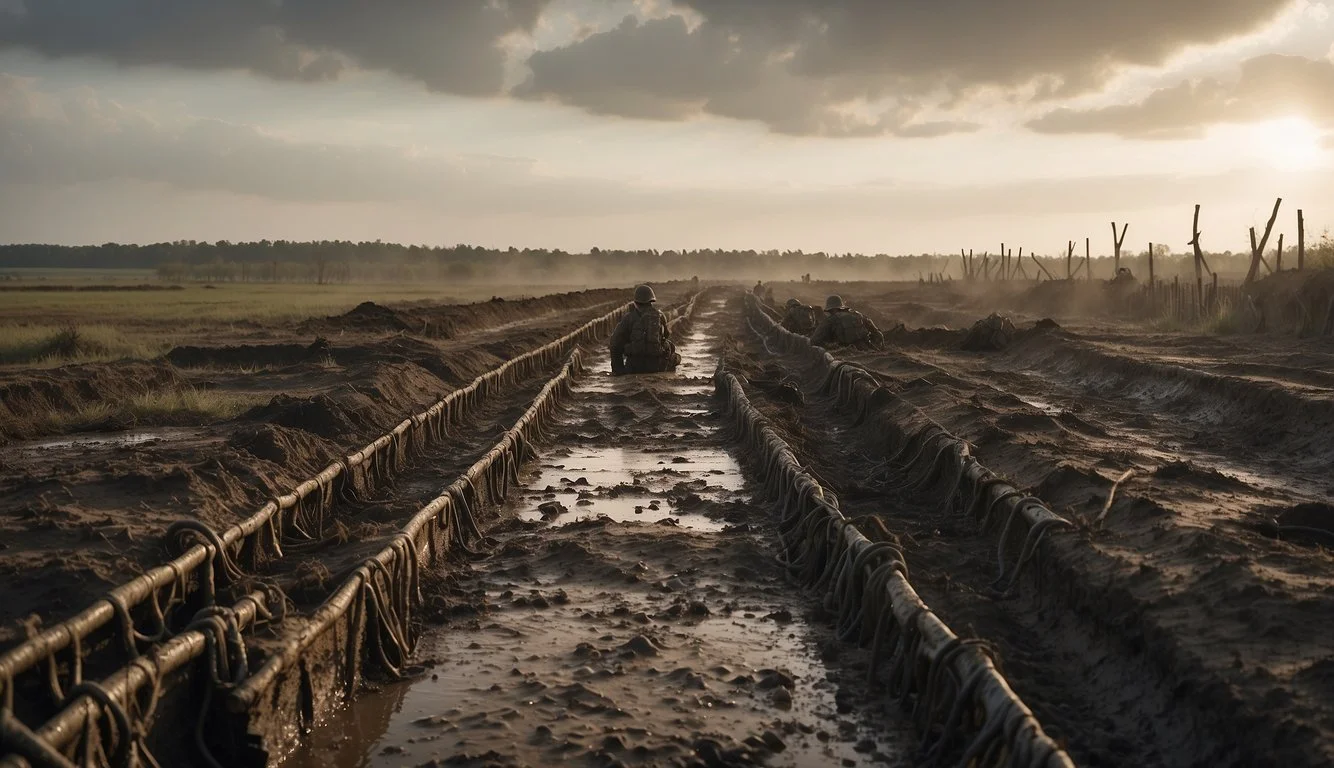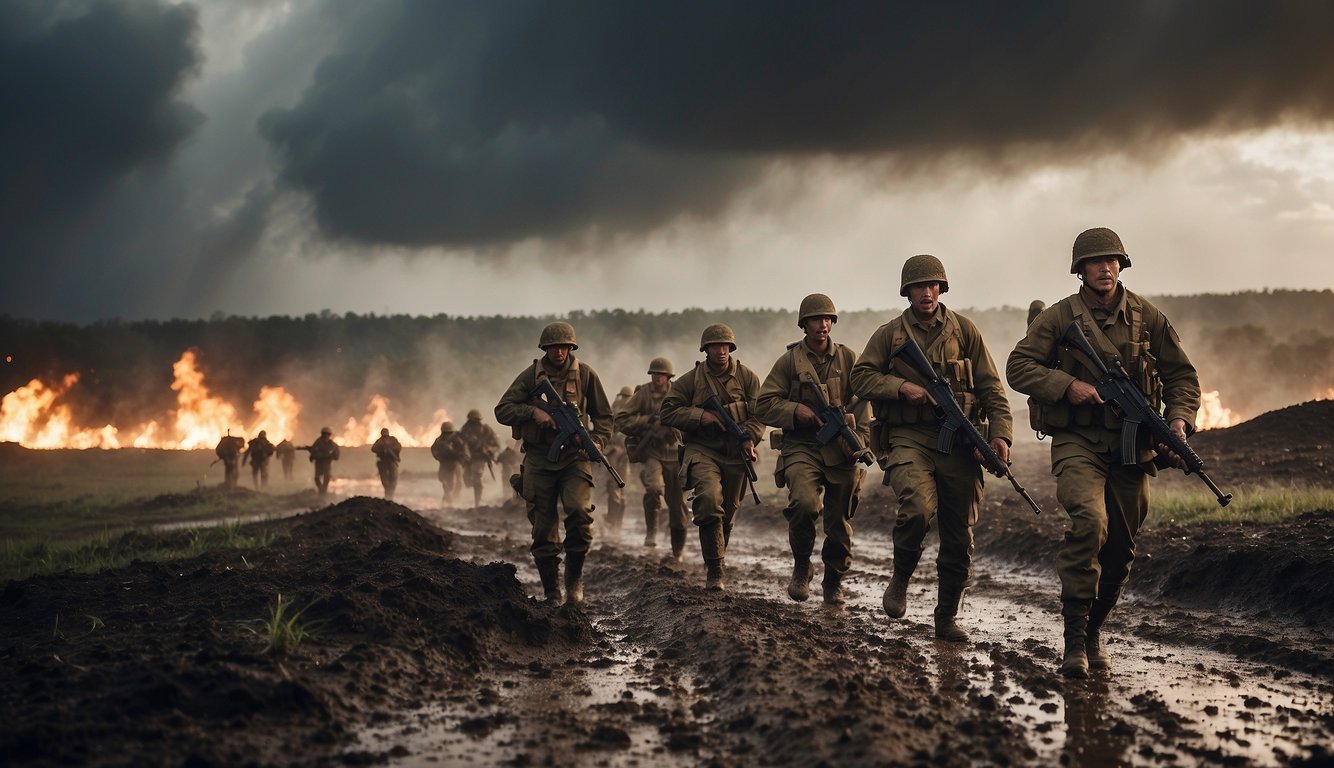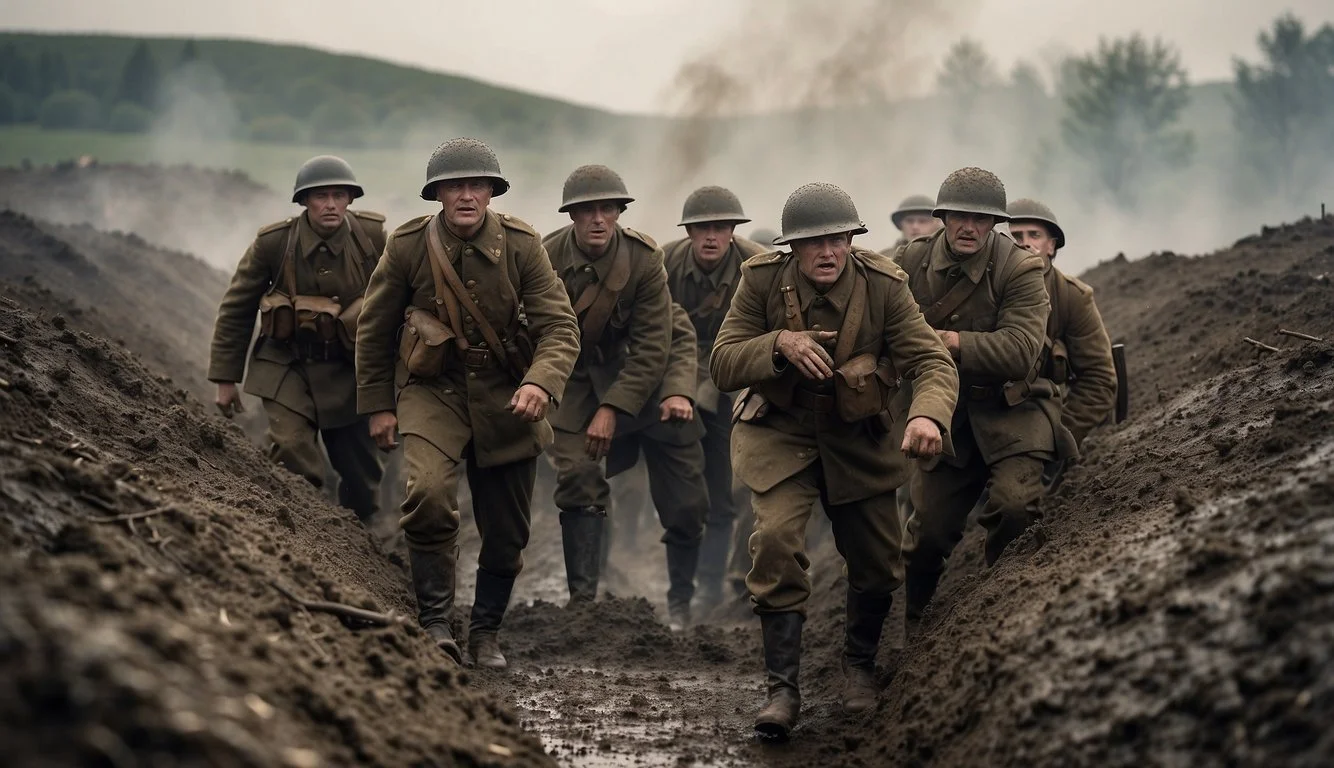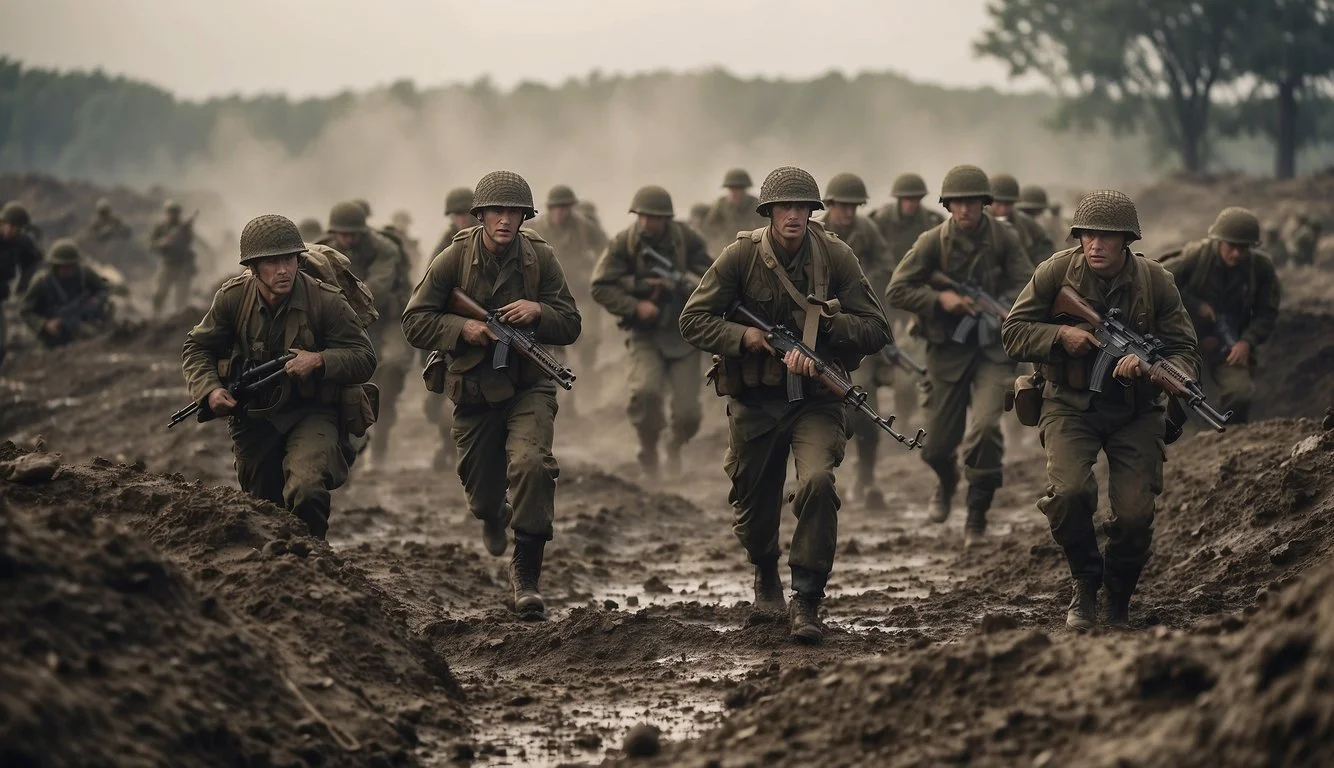Documentary Review: They Shall Not Grow Old (2018)
A Modern Masterpiece of War History
"They Shall Not Grow Old" stands out as a remarkable documentary that transforms World War I archival footage into a vivid portrayal of history. Directed by Peter Jackson, known for his work on "The Lord of the Rings," this film utilizes state-of-the-art technology to colorize and restore century-old footage. This impressive visual overhaul breathes new life into the black-and-white images, offering a unique and immersive experience.
The documentary begins with haunting black-and-white footage of soldiers preparing for battle, capturing their movements and expressions with striking clarity. By drawing on extensive film and audio archives from the BBC and the Imperial War Museum, Jackson crafts a narrative that is both intimate and expansive. The voices of actual soldiers narrate their experiences, adding an emotional depth that connects viewers directly to the past.
The technical achievements in "They Shall Not Grow Old" are matched by its historical significance. Jackson's meticulous attention to detail not only enhances the visual quality but also respects the authenticity of the source material. As a result, the film serves as a powerful reminder of the human aspects of war, making it a must-watch for history enthusiasts and casual viewers alike.
Background on 'They Shall Not Grow Old'
"They Shall Not Grow Old" is a documentary directed by Peter Jackson that delves into World War I using advanced restoration technology to colorize and give new life to historical footage. The film captures the experiences of soldiers with no narrative title cards, creating an immersive experience.
Director Peter Jackson's Vision
Peter Jackson sought to provide a fresh perspective on World War I by reviving century-old footage. His vision was not to make a traditional documentary but to immerse viewers in the lives of the soldiers. By removing narration and focusing purely on the soldiers' experiences, Jackson aimed to humanize the historical events, showing the war as it was experienced by those who lived through it.
Historical Significance
The use of authentic footage from World War I makes "They Shall Not Grow Old" a significant historical document. The documentary fulfills a critical role in preserving and presenting history. It highlights not just the battles but also the daily lives of soldiers, offering a well-rounded view of the war. This approach helps modern viewers connect with the past on a more personal level, making the historical events more relatable and poignant.
Production and Technology
The production of "They Shall Not Grow Old" involved state-of-the-art technology. Jackson's team meticulously restored and colorized original archival footage, some of which had never been viewed by the public. The film also utilized 3D technology to enhance the visual experience. This restoration process included syncing audio from real veterans' interviews with the footage, creating a powerful and authentic narrative. The result is a visually stunning and emotionally impactful documentary, which breathes new life into historical records.
Film Content Analysis
"They Shall Not Grow Old" offers a profound look into World War I, using original footage that has been meticulously restored and colorized. The documentary succeeds in immersing viewers through innovative techniques in structure, visual restoration, colorization, and detailed sound design.
Narrative Structure
The narrative structure in "They Shall Not Grow Old" steers clear of traditional documentary elements. There are no dates or title cards, and it lacks an omniscient narrator. Instead, the documentary relies heavily on the voices of soldiers who experienced the war. This choice creates an intimate connection between the audience and the historical events, grounding the film in personal stories rather than abstract historical details. The pacing is also instrumental, guiding viewers smoothly through different phases of the war, from training to the front lines, and finally, the aftermath.
Restoration Process
Peter Jackson's team applied state-of-the-art restoration techniques to transform the century-old footage. The original black and white footage was cleaned frame by frame, removing scratches and reducing noise to enhance clarity. Advanced technology enabled the correction of frame rates, resulting in smoother motion that makes the archival footage appear more natural to modern viewers. These meticulous efforts breathe new life into the old footage, making the historical events more accessible and compelling.
Colorization Techniques
Colorization played a significant role in making the footage relatable to contemporary audiences. The color palettes were chosen based on thorough historical research, including consultation with military historians and the analysis of original objects and locations. This careful attention to detail ensures that the colors are not just vivid but historically accurate. The result is a striking visual experience that bridges the temporal gap between the early 20th century and today, allowing viewers to see the past in a new light.
Sound Design and Voice Acting
The sound design in "They Shall Not Grow Old" is crucial to its immersive quality. Original recordings of artillery, machinery, and ambient sounds were integrated with the restored footage. Additionally, expert lip-readers reconstructed the dialogue, which was then voiced by actors, adding a layer of authenticity. The use of actual soldiers' voices from past interviews provides emotional depth, connecting viewers to the lived experiences of those who fought in the war. This soundscape enhances the realism and emotional impact of the documentary.
Critical Reception
They Shall Not Grow Old received widespread acclaim for its unique approach to presenting World War I footage. The documentary captivated both general audiences and critics, highlighting its technical achievements and emotional depth.
Public Response
The public response to They Shall Not Grow Old was overwhelmingly positive. Viewers praised the documentary for its vivid restoration of century-old footage, which provided an immersive experience. Many audience members expressed that the film's portrayal of soldiers brought a newfound sense of connection to historical events.
On social media, users commented on the film's emotional impact, noting how it humanized the soldiers. The restoration work, particularly the addition of color and sound, was highlighted as a significant factor in making the historical content more accessible and engaging to modern viewers.
The film also sparked discussions about the importance of preserving historical media, emphasizing the urgency of digital restoration efforts for other archival footage.
Critical Reviews
Critics lauded They Shall Not Grow Old for its innovative use of technology and its empathetic approach to storytelling. Roger Ebert's review noted the haunting quality of the restored footage, emphasizing the film's ability to convey the personal sacrifices of soldiers.
Variety commended Jackson's technical prowess, describing the documentary as a "technical dazzler." The lack of traditional narration was seen as a strength, providing a more immersive and human-centric perspective.
NPR's Kenneth Turan and Common Sense Media highlighted the film's groundbreaking restoration work. They cited it as essential viewing for understanding World War I's personal and historical impact. Despite the mature content, which some reviewers cautioned was best suited for older audiences, the film's emotional and educational value was broadly recognized.
Cultural and Educational Impact
"They Shall Not Grow Old" has significantly influenced how audiences perceive World War I and has found substantial use in educational contexts for its vivid portrayal and historical accuracy.
Effects on Historical Perception
Peter Jackson's documentary transforms traditional views on World War I by using restored archival footage that brings the past into vivid reality. By employing colorization, 3D effects, and high frame rates, the film immerses viewers into the soldiers' experiences, making historical events more relatable. This technical achievement challenges the static, distant imagery typically associated with early 20th-century conflicts. As a result, the film renews interest in World War I, making it more accessible to contemporary audiences who might otherwise feel disconnected from the events that occurred over a century ago.
Use in Education
Educational institutions widely utilize "They Shall Not Grow Old" for its unique presentation of World War I. The documentary provides an authentic portrayal of soldiers' lives, making it an effective tool for teaching history. Teachers incorporate it into curricula to enhance students' understanding of the war's human aspects. The lack of traditional narration allows viewers to hear directly from veterans, adding a layer of personal testimony that textbooks often lack. This approach fosters a deeper emotional connection and understanding of the war, helping students to engage more deeply with the subject matter. By showcasing firsthand experiences, the film serves as a powerful educational resource.
Comparative Analysis
"They Shall Not Grow Old" stands out for its unique approach within the war documentary genre and its pioneering use of technology to bring history to life. This section will detail its contributions in these two areas and highlight what sets it apart from other war documentaries.
Within War Documentary Genre
Peter Jackson's documentary distinguishes itself by focusing exclusively on the experiences of British soldiers during World War I. Unlike many war documentaries that utilize a mix of expert interviews and narration, this film relies solely on archival footage and firsthand soldier accounts. The absence of an omniscient narrator allows the voices of the soldiers themselves to drive the narrative, offering an intimate and personal perspective on the war.
The emotional impact of "They Shall Not Grow Old" is intensified by its restoration work. By colorizing the footage and using audio from the time, the film provides an immersive experience that feels both contemporary and historical. This approach sets it apart from more traditional documentaries that often maintain a more detached, purely informational tone.
Technology Advancements in Film
The film employs groundbreaking technology that redefines the war documentary genre. Jackson used state-of-the-art restoration processes, including colorization and 3D conversion, to transform century-old footage into vivid depictions of World War I. This technological feat required meticulous frame-by-frame restoration to remove scratches and correct speed inconsistencies.
In addition to visual enhancements, the documentary made innovative use of sound. Voice recordings of veterans were carefully synchronized with the footage, and modern sound effects were added to recreate the battlefield's auditory experience. This high level of technological sophistication allowed viewers to experience the war in a way that feels immediate and visceral, bridging the gap between past and present.
Conclusion
They Shall Not Grow Old presents a unique glimpse into World War I using restored archival footage. Director Peter Jackson employs advanced digital technology to colorize and convert the footage into 3D, transforming historical documentation into a visually engaging experience.
Without traditional narration, the film relies on firsthand accounts from veterans. Their voices, recorded decades ago, provide an authentic emotional backdrop to the stunning visuals.
The documentary captures both mundane and momentous aspects of wartime. From daily routines to the chaos of battle, it immerses the viewer in the soldiers' lived experiences.
This blend of old footage and modern technology prompts viewers to rethink conventional presentations of history. The technical achievements of the film serve as a bridge, connecting contemporary audiences with the past.

